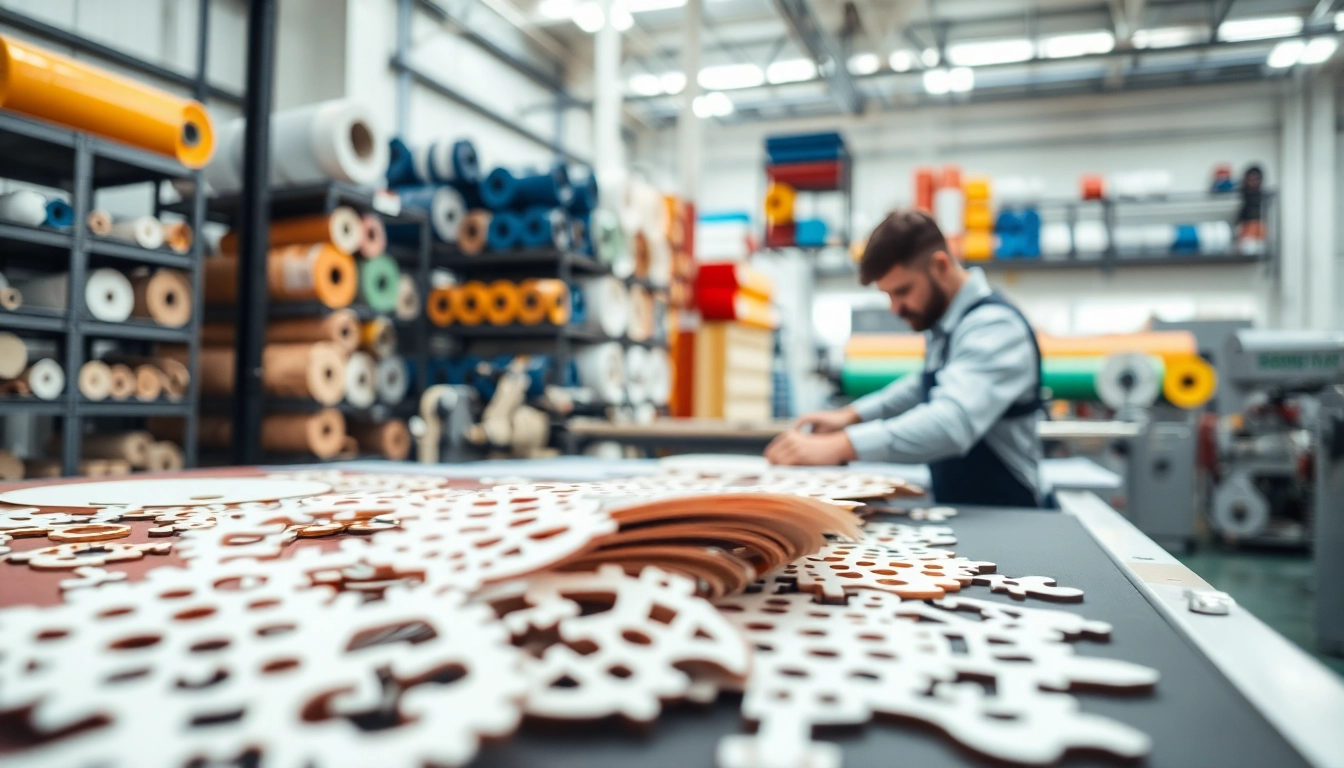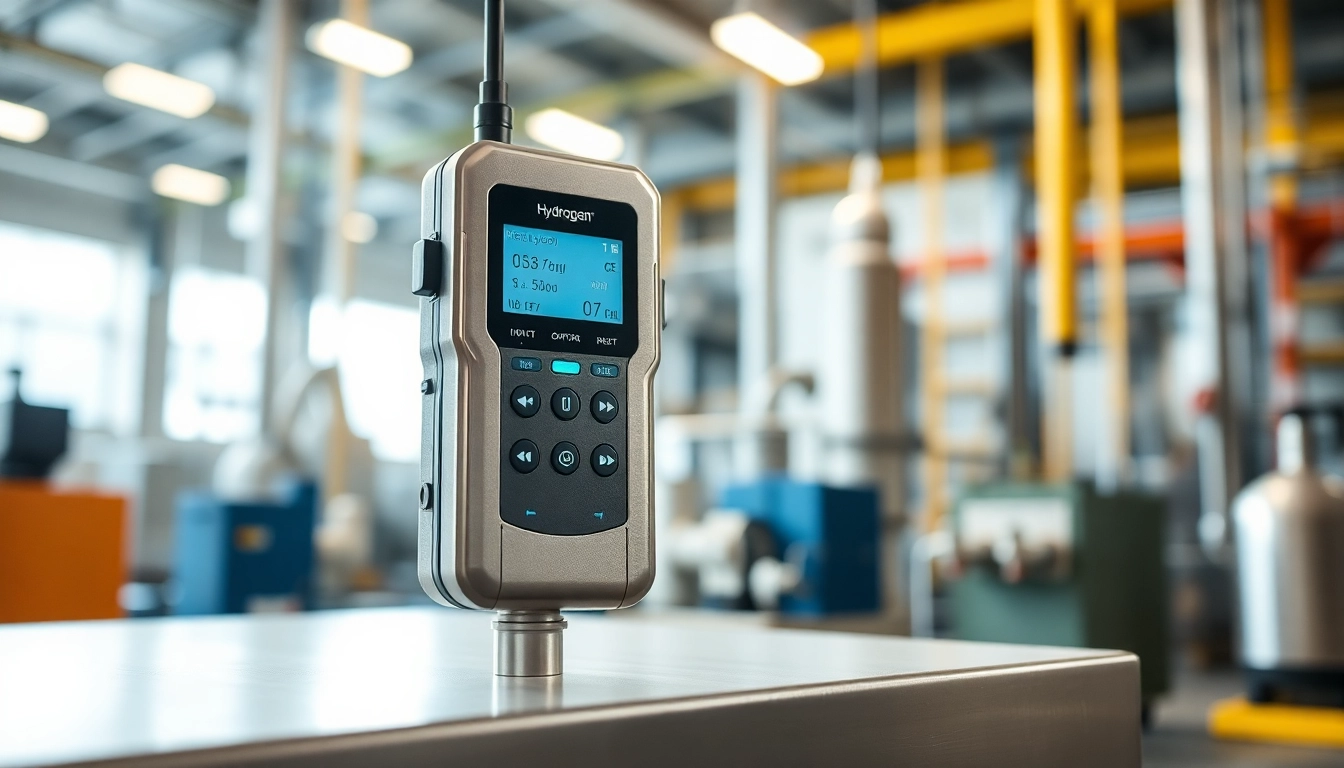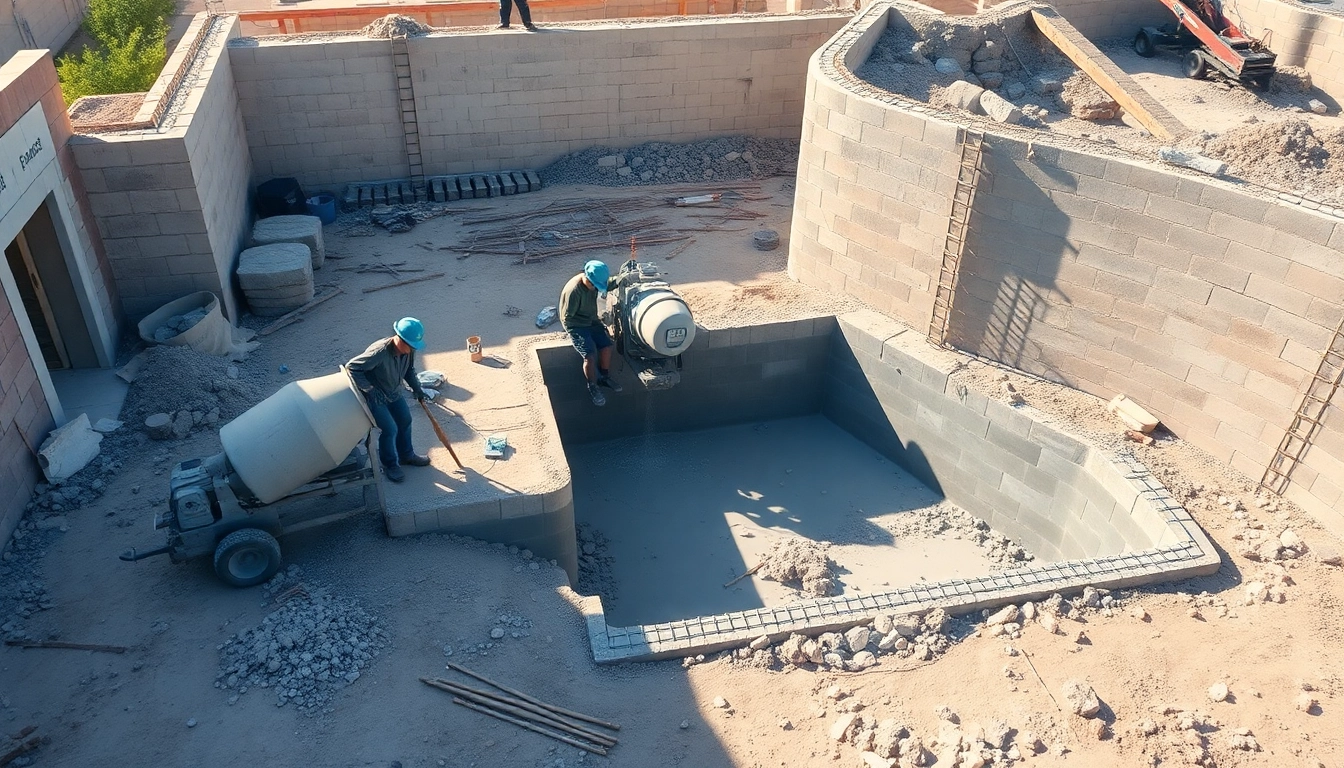Understanding Precision Die Cutting
What is Precision Die Cutting?
Precision die cutting is an advanced manufacturing process that uses specialized machinery to cut materials with a high degree of accuracy and repeatability. This technique allows manufacturers to create intricate shapes and designs with exceptional precision, making it an essential method in various industries. Typically, precision die cutting involves using a die made from hardened steel or other durable materials that can cut through sheets or rolls of materials, such as paper, plastic, metal, foam, and textiles.
This method stands apart from traditional cutting techniques by maintaining tight tolerances, enabling businesses to produce high-quality products that meet stringent specifications. The importance of precision die cutting extends beyond just manufacturing; it enhances design possibilities and contributes significantly to cost savings and efficiency in production processes.
The Importance of Material Selection
Material selection is a critical factor in the die-cutting process. Different materials interact uniquely with the cutting environment, which can affect the final product’s quality. For instance, softer materials like paper or foam require less force compared to harder materials like metals, which necessitate precise machine calibration for optimal results. Businesses must consider material properties such as thickness, density, and flexibility to determine the best approach for die cutting.
Additionally, material selection impacts durability, aesthetics, and functionality. For example, while using a foam material for cushioning may provide better shock absorption, other functions might necessitate a material like acrylic for its clarity and sturdiness. Understanding material behavior allows manufacturers to optimize the die-cutting process and ensure the end product meets its intended application demands.
Key Techniques in Precision Die Cutting
There are several techniques used in precision die cutting, each suited to specific applications and materials. The most common methods include:
- Flatbed Die Cutting: This technique utilizes a flatbed press where the die is pressed against the material. It is excellent for small to medium runs and provides versatility in handling diverse materials and thicknesses.
- Rotary Die Cutting: Ideal for high-volume production, rotary die cutting employs a circular die to cut materials as they pass through the machine. This method offers consistent quality and is well-suited for continuous rolls of material.
- Digital Die Cutting: This technique utilizes digital technology to cut complex designs without the need for physical dies. It is highly adaptable, allowing for rapid prototyping and shorter production runs.
- Kiss Cutting: A variation where only the top layer of the material is cut, leaving the backing intact. This technique is often used for stickers and labels.
By understanding these techniques, businesses can select the most appropriate method for their production needs, balancing speed, quality, and cost-effectiveness.
The Applications of Precision Die Cutting
Industries Benefiting from Precision Die Cutting
Precision die cutting serves a myriad of industries, with applications that span manufacturing, automotive, electronics, packaging, and medical sectors. Here’s a closer look at how different industries leverage precision die cutting:
- Manufacturing: Precision die cutting is crucial in producing gaskets, seals, and custom parts that require precise dimensions and shapes.
- Automotive: The automotive industry utilizes precision die cutting for producing components such as insulation, sound dampening materials, and decorative trim pieces.
- Electronics: Many electronic devices require high-precision cut parts for insulation materials, cushioning, and protective layers, all made possible through this advanced method.
- Packaging: Precision die-cutting creates custom packaging solutions, from blister packs to intricate multi-dimensional boxes, improving product presentation and protection.
- Medical: The medical sector relies on high-precision die-cut products, such as bandages, diagnostic devices, and surgical equipment components, thus ensuring safety and effectiveness.
Custom Products in Precision Die Cutting
The ability to create custom designs tailored to specific applications is one of the hallmark advantages of precision die cutting. Businesses can collaborate with manufacturers to develop unique solutions that meet their precise needs, whether for promotional products, specialized packaging, or intricate components for machinery. Custom die cutting enables organizations to differentiate their offerings in competitive markets and enhance overall customer satisfaction.
Case Studies: Successful Precision Die Cutting Implementations
Examining real-world examples can provide valuable insights into the benefits of precision die cutting. Consider the following case study:
Case Study: Electronics Manufacturer
A leading electronics manufacturer sought to reduce production times and improve product quality in its assembly lines. By implementing precision die cutting technology, they streamlined their process of cutting insulation materials for circuit boards. The transition not only reduced material waste significantly but also improved the accuracy of cuts, resulting in more consistent product quality and lower production costs. The company reported a 30% increase in production efficiency following the adoption of this technology.
Benefits of Precision Die Cutting in Production
Cost Efficiency and Speed
One of the primary advantages of precision die cutting is the significant cost savings it offers over traditional cutting methods. By employing automated cutting machinery, businesses can achieve higher production speeds, which translates to lower labor costs and faster turnaround times. Moreover, the accuracy of precision die cutting reduces material waste, further contributing to the overall cost-effectiveness of the process.
Enhanced Accuracy and Quality Control
Precision die cutting allows for the production of parts with tight tolerances, ensuring consistent quality across all products. This level of accuracy is particularly critical in industries such as aerospace and healthcare, where even the slightest deviation can lead to significant consequences. Quality control measures integrated into the die-cutting process help identify and mitigate potential issues, contributing to better overall product reliability.
Waste Reduction and Sustainability
The efficiency of precision die cutting not only minimizes production costs but also plays a vital role in promoting sustainability. By reducing material waste and optimizing the production process, manufacturers can contribute to a more environmentally friendly operation. Many companies are now adopting eco-friendly materials aligned with precision die cutting techniques, further reinforcing their commitment to sustainable practices.
Challenges in Precision Die Cutting
Common Issues and Solutions
While precision die cutting offers numerous advantages, it is not without its challenges. Common issues can include:
- Die Maintenance: Regular maintenance is crucial to maintaining die performance. Implementing a scheduled maintenance plan can mitigate wear and tear, ensuring optimal cutting quality.
- Material Compatibility: Not all materials are suitable for precision die cutting. Conducting thorough material testing prior to production can identify potential challenges, allowing manufacturers to adapt their processes accordingly.
- Setup Costs: Initial setup costs can be high, especially for custom dies. However, the long-term savings gained through increased efficiency and reduced waste often outweigh these initial investments.
Investment in Technology and Training
The role of technology in precision die cutting cannot be overstated. As methods and equipment continue to evolve, manufacturers must invest in modern technology to remain competitive. Moreover, ongoing training for staff operating die-cutting machinery is essential to ensure proficiency and safety. Organizations that prioritize investments in technology and skills development tend to experience greater success with their precision die cutting initiatives.
Balancing Quality with Cost
Achieving a balance between maintaining high quality and controlling costs is a persistent challenge within the manufacturing sector. Companies must assess their production needs, leading to a tailored approach in sourcing materials and selecting die-cutting methods that align with their financial objectives without sacrificing quality. Collaborating with experienced die cutting suppliers can help organizations navigate these challenges effectively.
Future Trends in Precision Die Cutting
Innovations in Die Cutting Technology
The future of precision die cutting looks promising with continuous advancements in technology. Innovations such as laser die cutting and computer numerical control (CNC) machines are enhancing cutting capabilities, allowing for even more intricate designs and faster production rates. These developments are expected to lead to increased customization options and further integration with digital workflows within manufacturing.
The Role of Automation in Precision Die Cutting
As the manufacturing industry shifts towards greater automation, precision die cutting is also embracing these trends. Automation in this field can include automated material handling and feed systems, as well as advanced inspection systems that ensure quality throughout the production process. By incorporating automation, manufacturers can streamline operations, increase production speed, and enhance overall efficiency.
Market Predictions and Opportunities
Market predictions suggest a continued growth trajectory for the precision die cutting industry, driven by increasing demand across various sectors. Opportunities exist for businesses that can leverage precision die cutting to create specialized solutions tailored to emerging technologies and consumer needs. As industries adopt more sustainable practices, manufacturers who prioritize eco-friendly materials in conjunction with precision die cutting techniques are likely to gain a competitive edge.


